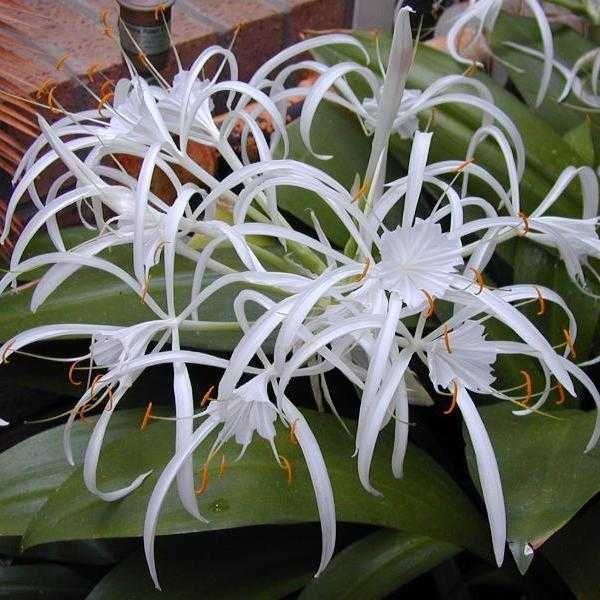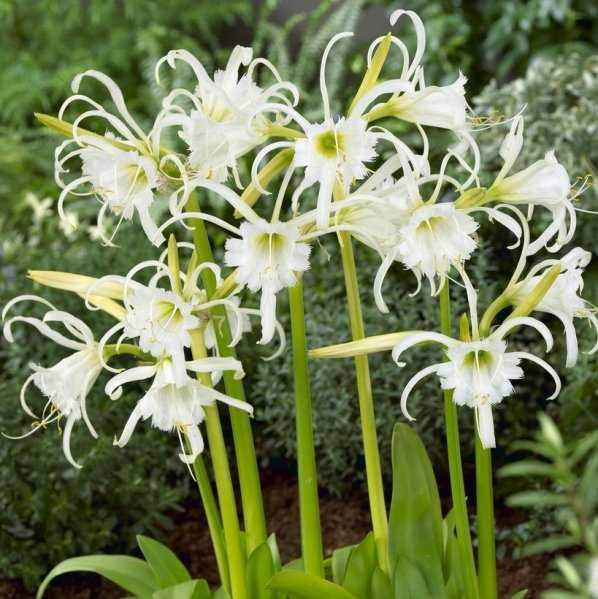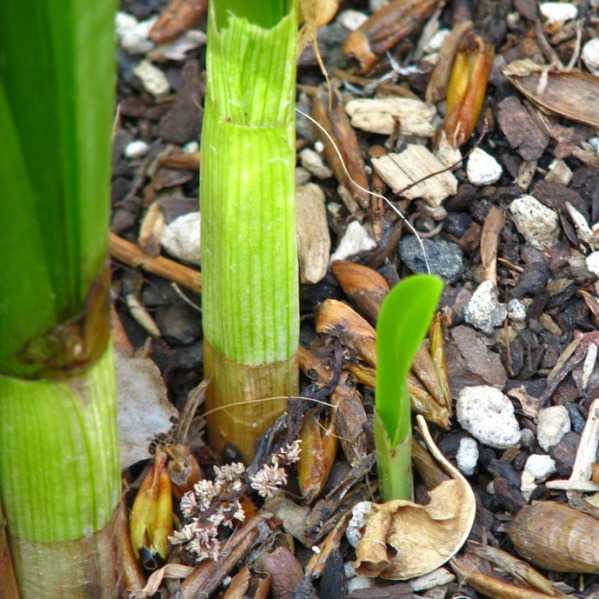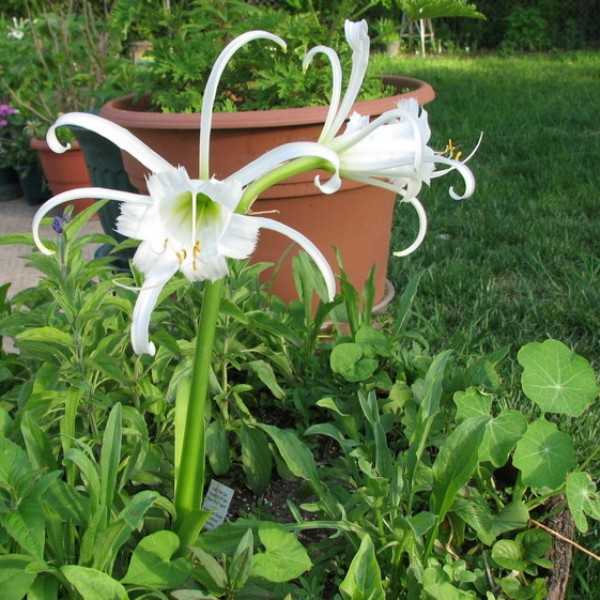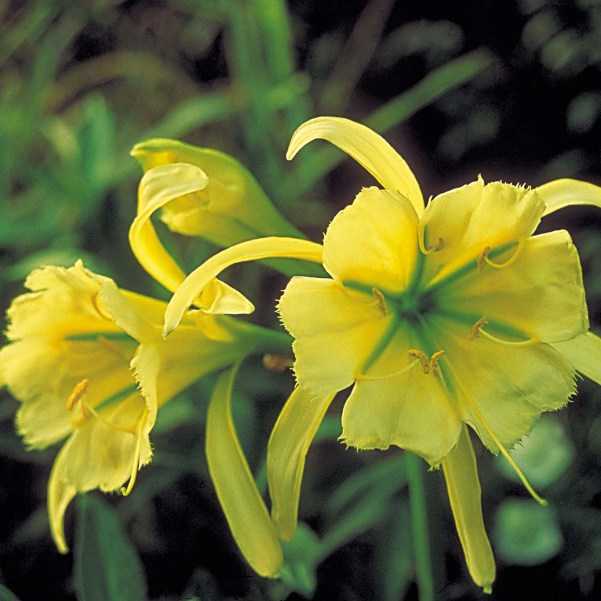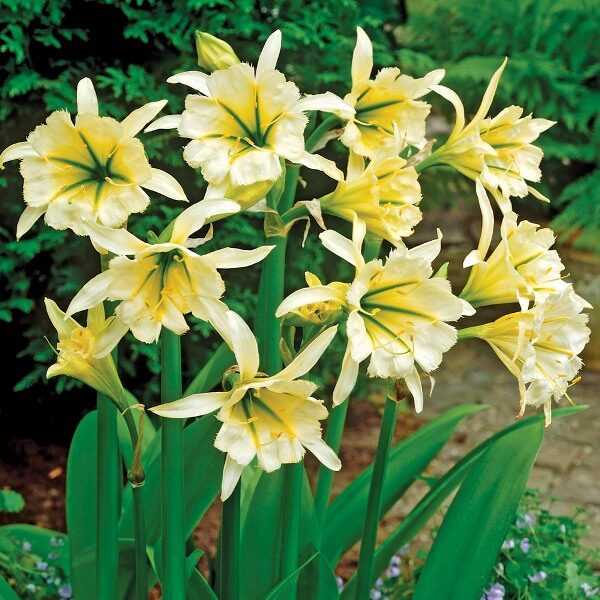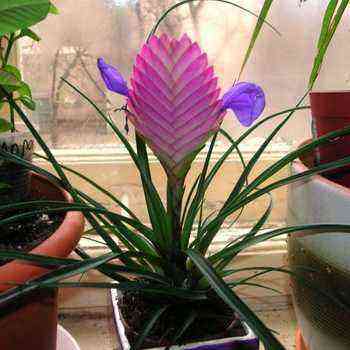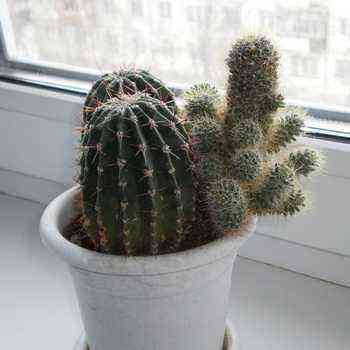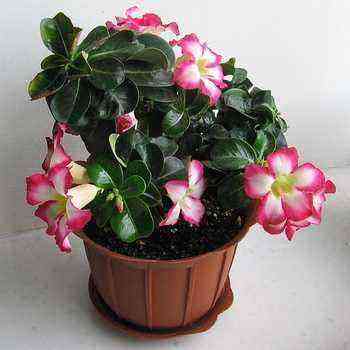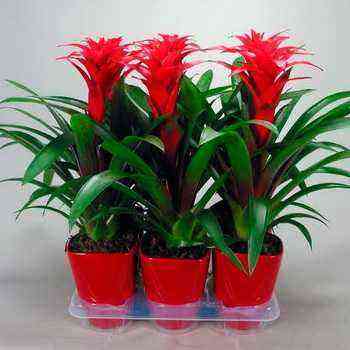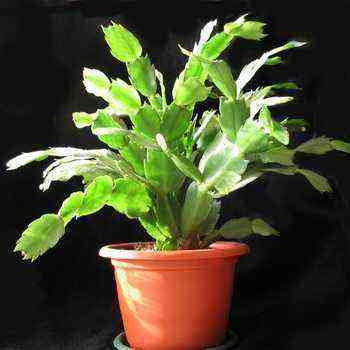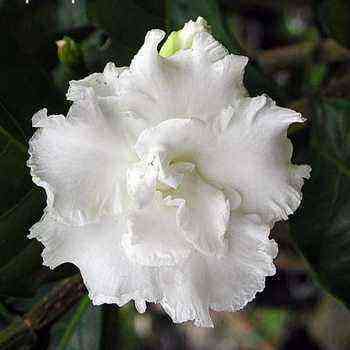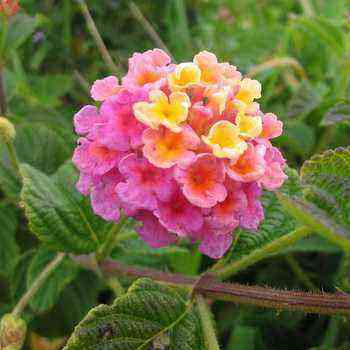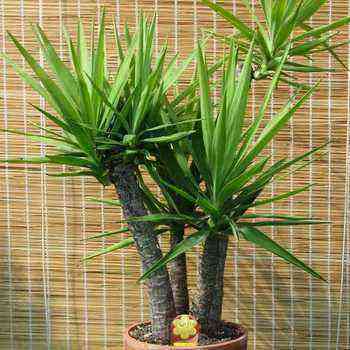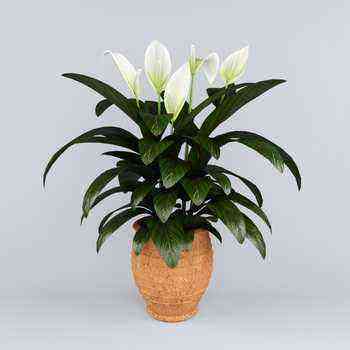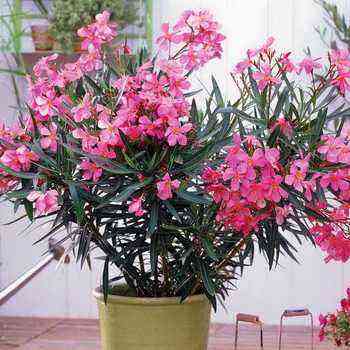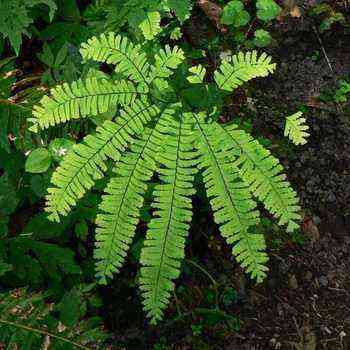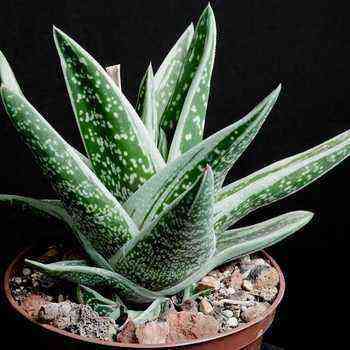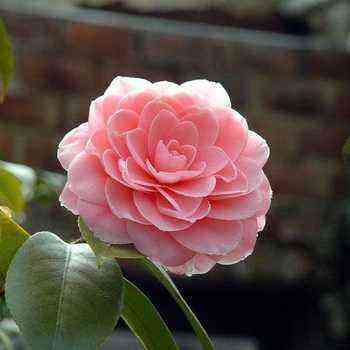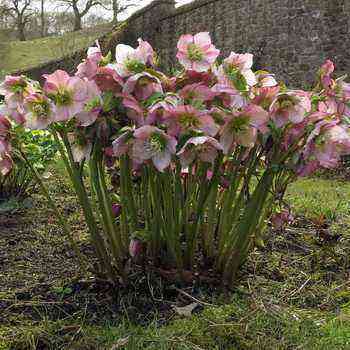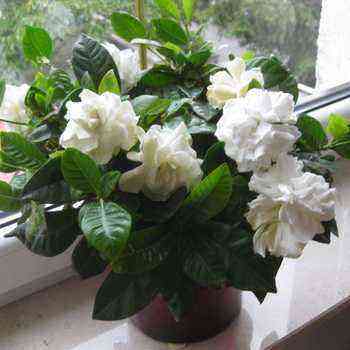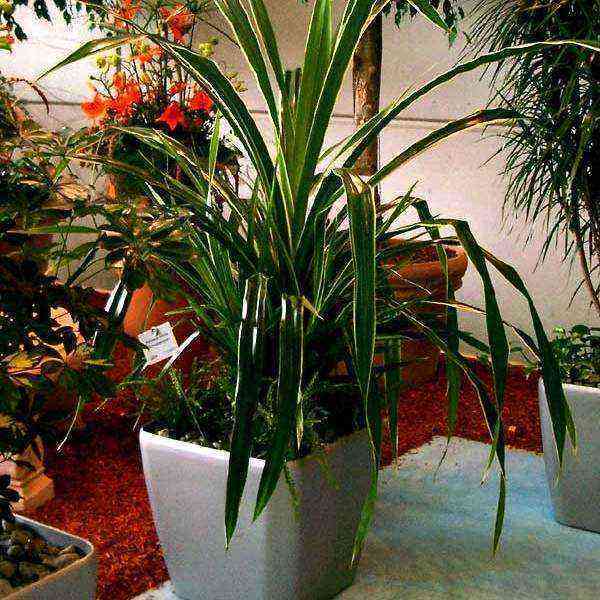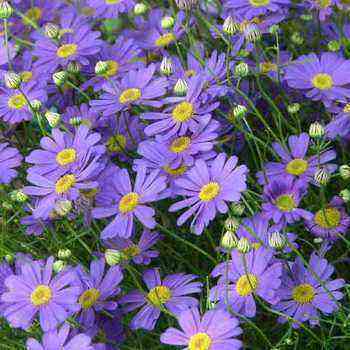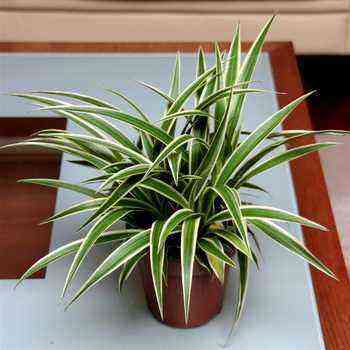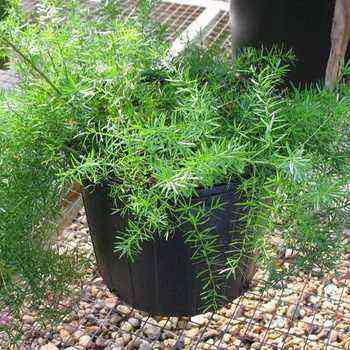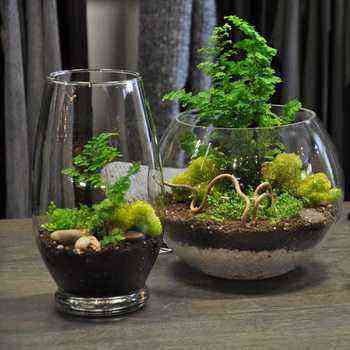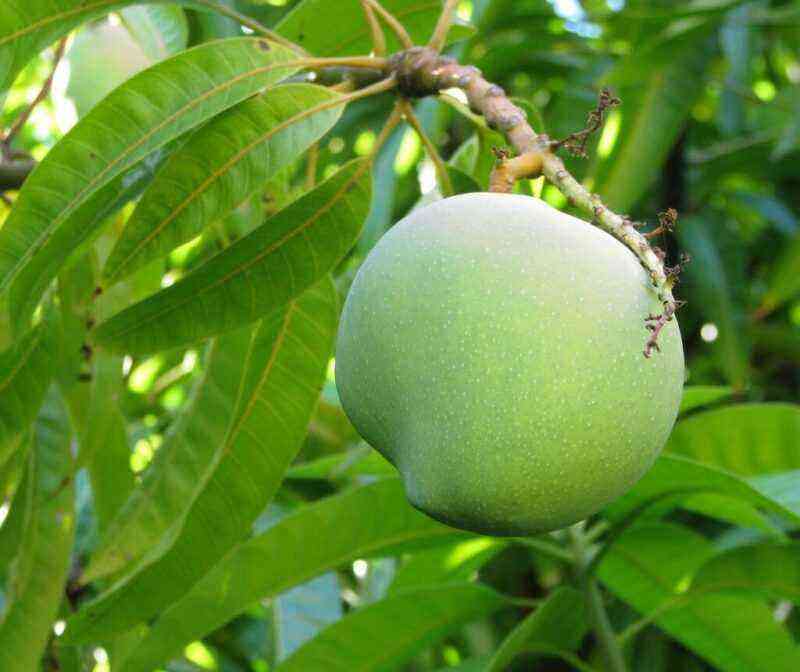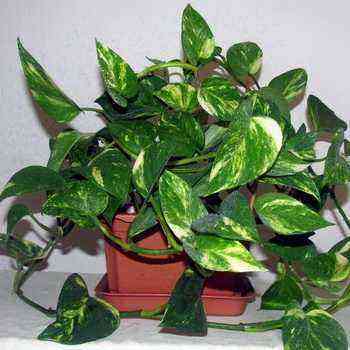Hymenokallis is a genus of flowering plants of the Amarelidae family, subfamily Amarelidoids. The name comes from two Greek words ὑμήν (membrane) and καλός (beautiful). It belongs to one of the curious forms of the hymenokallis flower, which consists of six narrow, curved petals attached to a small cup formed from an alloy of stamens.
It contains over 60 herbaceous bulbous perennials found in grasslands, wetlands and rocky surfaces. They also live in the tropical and subtropical regions of America – Indiana, Kentucky, Virginia, Carolina, Georgia, Florida, Alabama, Louisiana, Texas and Mexico. Many species can also be found in Central America and continue to grow down into northern parts of South America, that is, they are Brazil, Guyana and Venezuela.
The shape of the hymenokallis flowers can remind you of a daffodil or a lily – hence the common name “web lily” for some species.
The genus got its name thanks to the famous scientist Richard Anthony Salisbury, who, in fact, created this genus. In 1812, he separated a number of species previously noted in pancritium, starting with Hymenocallis littoralis. The main reason for the separation is that the fruits only have two seeds in each nest. Salisbury explained its name as referring to “a beautiful membrane that connects threads.”
Peduncles arise from leaves in the form of a belt. Each cluster contains flowers that are green, yellow or white and can also be huge and very impressive.
Description of hymenokallis and his photo
Hymenokallis flowers have a large stem with fragrant snow-white flowers with tall, spider-like, pale yellow calyx-shaped petals and large, quivering stamens. Flowers can appear both in late summer and early autumn. One inflorescence can have from six to eight shiny white flowers up to 20 centimeters in length. The staminal cup is about six centimeters in diameter. The flowering stem reaches a height of 30 to 60 centimeters.
The foliage, which outwardly resembles a sword of the knightly era, has a gray-green tint and grows in late spring. It begins to fade towards the end of summer, if the weather without rains persists for a long time. Look at the photo of hymenokallis flowers:
Hymenocallis seeds are fleshy and can be very unusual and may vary slightly in size per pod. When the seeds are ripe, you just need to drop them into the soil in the peas along with the parent plant. The ground must necessarily remain moist, and then, with proper care, in three to four months you will have the first shoots. Some growers choose to sow mixed seeds. In early spring, subspecies such as hymenokallis lyriosme, hymenokallis koronaria and hymenokallis crassifolia germinate within a month or so. And later species will not be able to germinate until the next spring. This is a general description of Hymenokallis as a horticultural crop. Now let’s move on to the rules for caring for him.
Hymenokallis care at home
In order to organize proper hymenokallis care at home, it is better to grow a flower in an open space. For example, many experienced florists advise growing hymenocallis in the garden, as there is the opportunity to provide it with a constant source of light. If you planted it in the house, then you should take care of a sufficient amount of artificial light.
The soil for the plant should contain two parts peat for one part loam with one part sand for one half cup of dry cow dung (add potting mix for every gallon).
Maintain soil moisture to keep the hymenokallis as long as possible. Also, a houseplant should be fed monthly with balanced fertilizer during the growing season (from spring to autumn).
In winter, keep the hymenocallis flowers in a well-lit area and provide good watering to keep the leaves from withering. You can grow a bush lily in your garden. Shortly before the start of frost, be sure to dig up the bulbs together with the root soil and put them in a well-ventilated room along with peat and vermiculite at a temperature of at least 18-20 ̊ C. Before the leaves have completely wither, they should be cut off immediately.
The following are the different types of hymenokallis flower in the photo:
You should know that each type has its own characteristics. So, for example, some subspecies do not lose their foliage during the winter. Caring for hymenokallis at home in relation to these species has a number of significant differences.
Hymenokallis flowers will grow ideally in moist soil with moderate watering in a sunny or partial shade area. The soil should never dry out. The plant takes root well in wetlands.
Growing hymenokallis
Hymenocallis spreads from the fall of its small bulbs growing on top of larger bulbs. To grow hymenokallis, the seed should be carefully selected. Very often you come across defective and pest-affected bulbs.
You can also grow this type of lily using seeds – you need to plant them about eight centimeters deep in the pre-prepared substrate. If the temperature is maintained at least 20 ̊С and constant watering, after 3-4 months you may have the first shoots. From spring to autumn, be sure to feed the sprouts with fertilizer. By the way, there is one small secret that increases the growth and volume of flowering – you need to choose a smaller container, then the hymenokallis will grow more willingly.
Hymenokallis is often propagated by quartering the parent bulb.
Hymenokallis festalis (also called early ismena)
It is also called the Holy Lily of the Incas. Hymenokallis festalis is a deciduous, bulbous plant that is a hybrid of the perennial garden plant Hymenokallis. It is also called spider lily or Peruvian daffodil. The flower with a wonderful aroma blooms in the hottest period of summer – around the end of June and early July. During dormancy, the entire ground part of the plant dies off.
It has an unusual shape with narrow and exquisitely curved leaves, a peduncle up to one meter long with a white flower with a pronounced aroma and picturesque orange anthers. The spliced stamens seem to form a crown over the flower.
By the way, did you know that the buds of the hymenokallis and change always open at the same time with an accuracy of minutes-seconds.
Hymenokallis festalis white
Hymenokallis festalis white is common in tropical and subtropical regions of South America. The optimum temperature for normal growth and existence is not less than 10 degrees Celsius, but not more than 25. When replanting, it is recommended to use soil with two parts of peat and humus. Subject to all growing conditions, the flower can reach one meter in height. The flowers are most often white.
A bulb with a diameter of no more than 10 centimeters is placed when planted in the ground at 2/3 of the total soil level. The foliage is in the form of a belt up to 50 centimeters long and 7 centimeters wide.
Hymenokallis caribbean
Hymenokallis caribbean is the most popular species for garden and home cultivation. The flower is also often used for landscaping parks, public places and lines along roads and highways.
It includes broadleaf hymenokallis, littoralis, expansion and tropical giant. In the photo – Caribbean hymenokallis in bloom:
The homeland of the flower is the Caribbean Islands (where the name of the variety actually came from) and the northern part of South America. Other researchers also consider Puerto Rico, Jamaica, Haiti, Cuba, the Virgin, Windward and Leeward Islands, as well as part of the Venezuelan Antilles as his homeland. Hymenokallis caribbean is widely distributed as an ornamental plant in Sri Lanka, New South Wales, Bermuda, French Guinea, Suriname and Guyana.
The leaves of a flower of a yellow, dark orange or snow-white shade can reach a length of 80 centimeters, and a flower umbrella contains up to 12 white flowers. Narrow-linear leaves up to 10 centimeters long usually descend during the period of active flowering.
The foliage of the Caribbean hymenokallis can grow year-round, although sometimes it can succumb to painful rust, yellow spots. The only correct solution in this case is to remove the diseased leaves. It blooms in winter, it happens that even three times a year.
This variety, like no other, needs good watering and lighting. When planting, the bulb must be placed in the soil to its full depth.
These spider-like flowers will open every evening (and at the same time) and emit a surprisingly intoxicating scent that intensifies by dawn and fades towards lunchtime. Although the flowers are short-lived (about 2-3 days), the flowering process itself takes about ten days.
Hymenokallis caribbean is very easy to care for – they can easily tolerate direct sunlight and bright light (as well as partial shade), love wet conditions and require a lot of water, prefer well-drained water. Moist soil, but can grow easily in normal soil. He does not need pruning, it is enough just to occasionally pluck out yellow and wilted leaves, and also keep the flower clean.
If your hymenokallis does not bloom
In the event that all your efforts are unsuccessful and your hymenokallis does not bloom, then this may mean the following:
- it means you have not given the hymenokallis a rest period;
- you have chosen an insufficiently bright place;
- too cold in the room;
- have not fed the plant for the past year.
Safety measures
Like many other species of the Amarelid family, hymenocallis flowers contain various alkaloids that, upon contact, can cause allergies. We strongly recommend that people with allergies or very sensitive skin never touch or taste the flower. Its bulbs are also poisonous – they can cause vomiting, diarrhea and nausea.
The plant is part of a wetland system and helps trap sediment as well as filter water.
